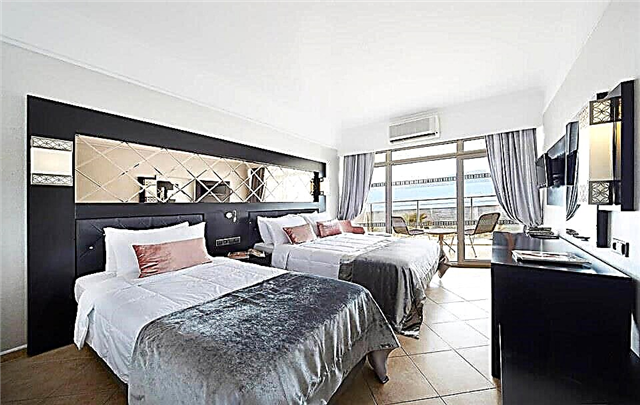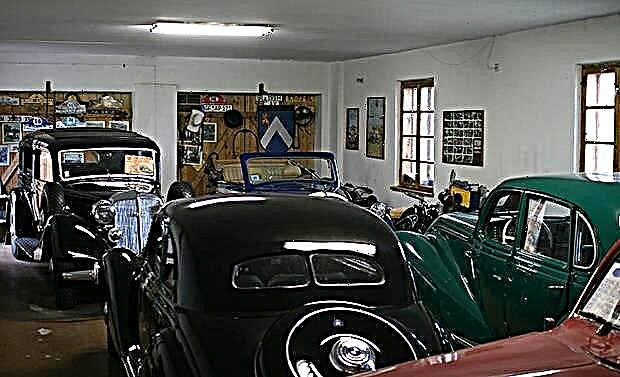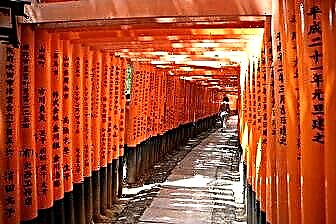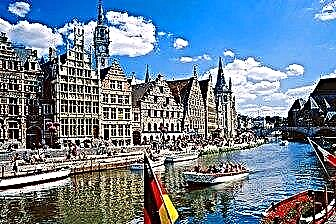Calm, cozy and atmospheric cities in Belgium never cease to amaze and delight tourists. Ghent is no exception - the charming capital of Flanders has retained its medieval charm and very special spirit. It is a city of stately Gothic cathedrals and picturesque houses of wealthy merchant guilds that seem to strive to surpass one another in the grace of their facades.
Ghent early became the commercial and industrial center of Flanders. For many centuries, human rights and freedoms have been observed here, traditions have been honored and the future has been built with dignity. In summer, the city is buried in flowers, which is especially pleasant for tourists. Once every few years, a grandiose flower festival is held in Ghent, which attracts half of Europe.

The best hotels and hotels at affordable prices.
from 500 rubles / day
What to see and where to go in Ghent?
The most interesting and beautiful places for walking. Photos and a short description.
Friday Market Square
One of the oldest squares in Ghent, which has witnessed many historical events: conflicts between trade guilds, executions and coronations. The weekly Friday market has been gathering here since the end of the 12th century, a long time ago this event has become an unshakable tradition. The square is surrounded by buildings from the 15th-19th centuries; in the center there is a monument dedicated to Jacob van Arteveld, the leader of the anti-French uprising of the 14th century.

Town Hall of Ghent
The city council building, which is a mixture of architectural styles. The façade is clearly divided into two parts belonging to different eras. Here you can find elements of Gothic, Flemish Renaissance, pseudo Empire, Baroque. The town hall was built in the first half of the 16th century on the site of the former home of one of the trade guilds. In the 19th century, several reconstructions were carried out, including the complete renovation of the interior.

Ghent post office building
An architectural monument of the late 19th - early 20th centuries, erected according to the project of L. Kloquet in the neo-Renaissance and neo-Gothic style. The façade is adorned with emblematic statues depicting Belgium, Flanders and Wallonia. The smaller statues are the Belgian provinces. A traditional clock tower with a pointed spire rises above the post office. At the moment, the premises houses a commercial center.

Belfry Tower
In the distant Middle Ages, the tower performed an important function of alerting the population in case of approaching the city walls of enemy troops, the beginning of a fire or other disasters. In the event of such an event, a large alarm bell began to ring. The tower was erected in the XIV century, over time it turned into a symbol of freedom of the citizens of Ghent. At one time, a document on city privileges was kept in the tower.

Castle of the Counts of Flanders
An ancient powerful fortress of the XII century, one of the most visited sights of Belgium. The building has been perfectly preserved and has survived to this day. The rulers of Flanders used the castle as a defensive fortress, residence and mint. Inside the building there is a museum of weapons, where magnificent medieval swords, crossbows, daggers, armor, and pistols are exhibited.

Castle of Gerard the Devil
An ancient gloomy castle that belonged to one of the sons of the Ghent count. According to legend, this character killed several of his wives, for which he received the nickname "Devil". The complex was built in the 13th century in a monumental Romanesque style, but later it was rebuilt several times, due to which the building acquired a later Gothic appearance. For centuries, the castle housed a monastery, a madhouse, an orphanage, a prison and a city archive.

Cathedral of Saint Bavo
Cathedral of Ghent, belonging to the Roman Catholic Diocese. There was a wooden church on the site of the present temple in the 10th century, later in the 11th century it was rebuilt in the Romanesque style, and from the 14th century in the Gothic style. The most famous relic of the temple is the Ghent Altarpiece, painted by the recognized masters of the early Flemish Renaissance - the Van Eyck brothers.

Church of St. Nicholas
The temple is one of the oldest religious buildings in Ghent. Its history began in the XII century. The predominant architectural style of the building is the Scheldt Gothic, which is distinguished by the use of a special type of blue-gray stone. The Church of St. Nicholas was owned by the powerful trading guilds of Ghent. But this did not save it from partial destruction during the Iconoclastic uprising of 1566.

Church and St. Michael's Bridge
Magnificent 15th century Gothic church located in a quiet central area of Ghent. The temple was built over several centuries until 1828. The restoration was carried out after the First World War. The picturesque St. Michael's Bridge leads from the church to the opposite side of the Lis River. It offers a stunning view of the surrounding architectural splendor of the city's cathedrals, towers and medieval streets.

Museum of Fine Arts
A museum with a rich and varied collection. It occupies a very worthy place in the galaxy of Belgian art galleries. The core of the museum collection was made up of works of art confiscated from the Jesuit Order and other religious associations. Later, many of the exhibits were taken to Paris by the French. Ghent has not yet managed to return an impressive part of the exhibition. The museum was opened to visitors - in 1904, and after the First World War it started working in 1921.

City Museum of Contemporary Art (S.M.A.K.)
The museum was organized in 1999. He quickly gained popularity thanks to his bold provocative exhibitions and events. The permanent exhibition presents works by E. Warhol, F. Bacon, K. Appel, J. Boyes and other famous masters of our time. Also, temporary exhibitions are often held on the territory, where exhibits from other fashionable galleries of contemporary art are brought.

Museum of Industry, Labor and Textile
The museum collection occupies the building of a former textile mill located in the central part of Ghent. The exhibits tell the story of the development of local industry since 1750. Most of the exposition is devoted to textiles, since Ghent already in the 18th century turned into a major center for the manufacture and processing of textiles. The museum exhibits looms, spinning wheels, machinery and other equipment.

Complex of protective structures Works
The complex is part of the 15th century city wall. It consists of two round towers, a stepped façade in the middle, and a bridge. After losing its defensive significance, Works was used as an archive, tavern and warehouse. Today the territory of the complex is used for holding meetings, lectures and seminars. Residents of Ghent call the sights quite simply - "Three Towers".

Station Ghent-Sint-Peters
The main railway station of Ghent, which grew out of a small station. The modern building was completed for the opening of the 1913 World's Fair. Trains depart from the station in all directions within the country. The station ranks second in Belgium in terms of congestion, so it is better to purchase a ticket in advance, otherwise there is a risk of not getting on the desired train. In 2007-2010 Gent-Sint-Peters has been renovated and renovated.

Grass Street and Grain Street
The embankments of Ghent, located on the Lis river, constitute a harmonious architectural complex. Historical buildings of the 17th-19th centuries have been preserved here.- houses of trade guilds, built in the style of the Flemish Renaissance, Brabant Gothic, Baroque and Neoclassical. Grass Street and Grain Street are popular places for walking among tourists. Many houses have restaurants with summer terraces, and after a hearty dinner you can take a boat ride.












